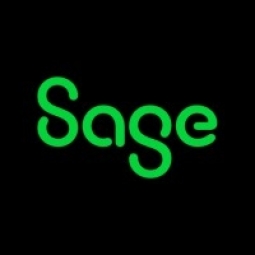Customer Company Size
Large Corporate
Region
- America
- Europe
Country
- United States
- United Kingdom
Product
- Sage 500 ERP
- Sage SalesLogix
Tech Stack
- GPS
- Barcode functionality
Implementation Scale
- Enterprise-wide Deployment
Impact Metrics
- Productivity Improvements
- Customer Satisfaction
Technology Category
- Functional Applications - Enterprise Resource Planning Systems (ERP)
Applicable Functions
- Sales & Marketing
- Logistics & Transportation
Use Cases
- Inventory Management
- Supply Chain Visibility
Services
- System Integration
About The Customer
SkyHawke Technologies, LLC, operating as SkyGolf®, makes the world’s leading golf rangefinder—SkyCaddie®. While competitors rely on outdated satellite and aerial images for their GPS maps, SkyGolf’s mappers walk every course using survey-grade equipment for the most complete and reliable course information available. Over the last 10 years, SkyGolf has had to continuously hone and perfect its products, processes, and services to manage its exponential growth worldwide. This growth required enterprise-level tools, which is why SkyGolf selected Sage 500 ERP* and Sage SalesLogix to keep its operations in full swing.
The Challenge
SkyGolf, a busy distributor, needed a sophisticated solution to optimize its distribution and customer service operations. The company prides itself on efficient order handling, and its high volume of orders tests that capability daily. Each SkyCaddie unit is serialized, and that serial number becomes the key data element that enables the company to track the unit from receipt through distribution all the way to retail purchase, service, and repair. As retail customers purchase a new unit and register it online, that data flows into Sage SalesLogix, completing the cycle.
The Solution
SkyGolf selected Sage 500 ERP and Sage SalesLogix as its integrated business management solution. The flexibility and open database structure of both Sage 500 ERP and Sage SalesLogix make it possible to design and implement a tailored and comprehensive business management solution. Both products offer advanced customization options, and SkyGolf has taken advantage of the customization options to build an ideal solution. Using the barcode functionality inherent in Sage 500 ERP, the company’s warehouse employees scan picking sheets, items, and serial numbers as they pick, pack, and ship. A sophisticated UPS® integration application, developed by the company’s Sage Authorized Partner, has proven to be a step-saver; it captures the package’s tracking number and writes it into the Sage 500 ERP database and automatically generates an email informing the customer of the details of their shipment.
Operational Impact

Case Study missing?
Start adding your own!
Register with your work email and create a new case study profile for your business.
Related Case Studies.

Case Study
Remote Temperature Monitoring of Perishable Goods Saves Money
RMONI was facing temperature monitoring challenges in a cold chain business. A cold chain must be established and maintained to ensure goods have been properly refrigerated during every step of the process, making temperature monitoring a critical business function. Manual registration practice can be very costly, labor intensive and prone to mistakes.

Case Study
Hospital Inventory Management
The hospital supply chain team is responsible for ensuring that the right medical supplies are readily available to clinicians when and where needed, and to do so in the most efficient manner possible. However, many of the systems and processes in use at the cancer center for supply chain management were not best suited to support these goals. Barcoding technology, a commonly used method for inventory management of medical supplies, is labor intensive, time consuming, does not provide real-time visibility into inventory levels and can be prone to error. Consequently, the lack of accurate and real-time visibility into inventory levels across multiple supply rooms in multiple hospital facilities creates additional inefficiency in the system causing over-ordering, hoarding, and wasted supplies. Other sources of waste and cost were also identified as candidates for improvement. Existing systems and processes did not provide adequate security for high-cost inventory within the hospital, which was another driver of cost. A lack of visibility into expiration dates for supplies resulted in supplies being wasted due to past expiry dates. Storage of supplies was also a key consideration given the location of the cancer center’s facilities in a dense urban setting, where space is always at a premium. In order to address the challenges outlined above, the hospital sought a solution that would provide real-time inventory information with high levels of accuracy, reduce the level of manual effort required and enable data driven decision making to ensure that the right supplies were readily available to clinicians in the right location at the right time.











